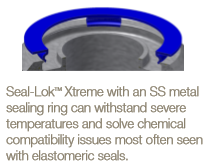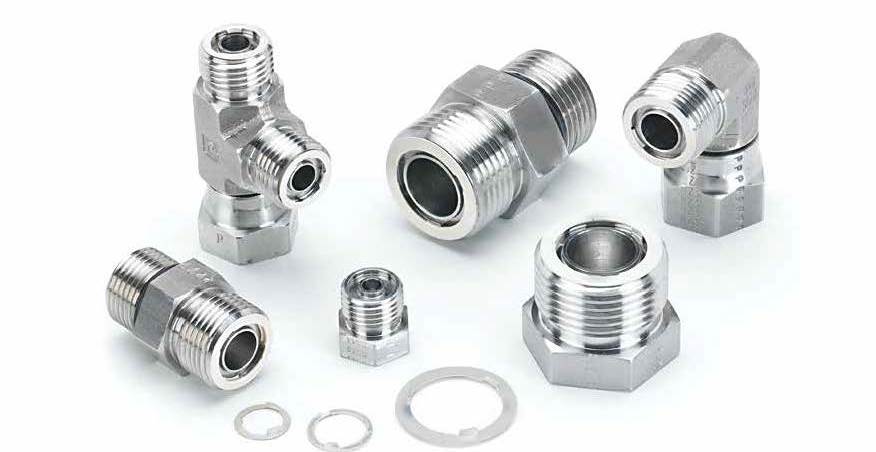By Ted Amling, Sr. Project Engineer, Parker Hannifin Corporation, Tube Fittings Division

Sealing methods typically fall into two types for extreme temperatures. The first type is direct metal-to-metal sealing with no replaceable sealing element. This type includes compression fittings and 37° flare fittings. The second type uses replaceable gaskets to make the seal including ANSI flanges and its many variants, as well as the multitude of metal seal shapes to replace O-rings, such as c-seals.
There are limitations, however, to these two methods. Direct metal-to-metal sealing can be difficult to work with due to low tolerance for small scratches and imperfections. This sealing has limited reuse due to the required deformation of the sealing surfaces, and assembly procedures can be confusing to new users. Replaceable gasket sealing is an improvement over metal to metal sealing. However, traditional systems such as ANSI flanges require large space claims, while O-ring replacement metal seals can be cost prohibitive and typically have limited reuse potential.

Operating temperatures for traditional ORFS fittings are limited by the seal material. Seal materials such as perfluoroelastomers (FFKM) can operate up to 600°F max, while very few elastomer seals can achieve more than -70°F. These materials can be very cost prohibitive and still do not extend the temperature range much past what more common FKM or HNBR seals can achieve. Metal sealing technology is really the only option for extreme temperatures, and the Seal-Lok Xtreme™ seals easily operate from -328°F to 1200°F, while providing a much broader chemical compatibility as a bonus. These seals are made from316 stainless steel and are coated with silver to promote sealing and prevent galling at high temperatures. Combined with 316SS fittings and tubes, this system provides a thermally stable connection with instrumentation-grade sealing available on industry standard ORFS fittings.

Some of the product benefits include:
- assembly to torque
- no damage from overtightening
- zero clearance for easier plumbing
- excellent vibration resistance
- unlimited reuses
- reduced assembly/ disassembly times
- positive seal retention
- enhanced anti-galling dry film lubricated nuts
- replaceable silver plated seals
- available in tube and hose sizes 1/4″ to 2″ (6 mm to 50 mm)
- AISI/SAE 316/316L stainless steel material (fittings and seals)
- working pressures up to 6000 psi
- meets requirements of ASME B31.1 and B31.3
Next time you are considering what product to use to connect your extreme temperature fluid or gas system, or if you are unhappy with the current choices on the market, consider Parker’s new patented Seal-Lok Xtreme™ ORFS fitting as an option.

